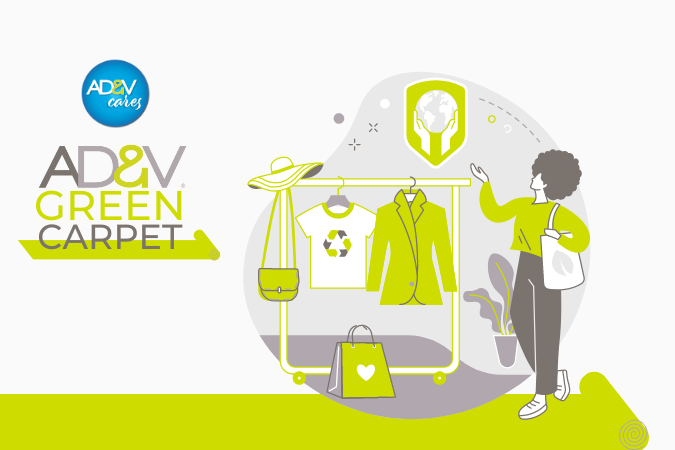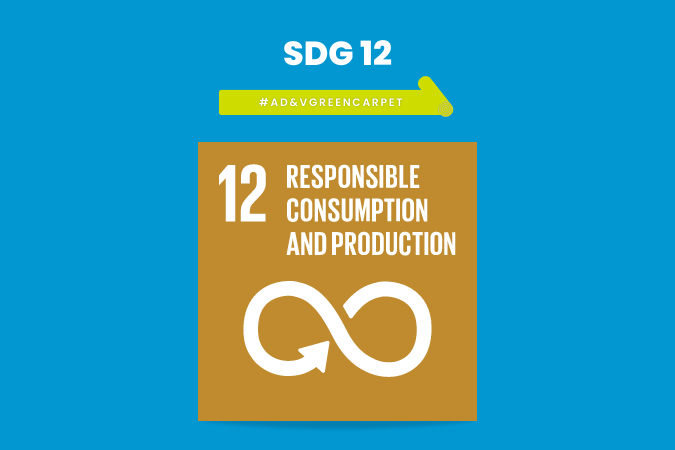6 Ways to Make Sustainable Fashion Choices
Written By AD&V®ABOUT THE AUTHOR | AD&V® is dedicated to advanced and energy-efficient sustainable architecture & interior design that enhances people’s experience of the world and improves their lives.
THE EARTH IS RICH IN NATURAL RESOURCES, YET WE MUST USE THEM RESPONSIBLY.
Our reckless use of these resources has resulted in overconsumption, exceeding the world’s capacity to provide. We must adopt sustainable consumption habits to alleviate the damage we've inflicted on the planet.
For this year’s Earth Day initiative, we’re working on SDG #12, which aims to ensure sustainable consumption and production patterns. More specifically, we’re focusing on an educational campaign on sustainable fashion consumption and textile recycling.
ABOUT OUR EARTH DAY INITIATIVE
Earth Day provides an opportunity for individuals, organizations, and governments to come together, reflect and take action toward creating a more sustainable and livable future for all.
Every year we celebrate Earth Day as part of our commitment to take care of our communities and our planet. Through our Earth Day initiatives, we educate and promote sustainable living to contribute to a greener and healthier future for ourselves and our environment.
Our Earth Day initiative this year has two components that tie into SDG #12 of responsible consumption and production; an educational component and a component that involves the AD&V team and their families.
During the month of April, our Earth Day educational campaign focuses on sharing tips on sustainable fashion choices and responsible textile recycling on our digital platforms.
We’re also encouraging our team to Spring Clean and scout their closets for clothing items in good condition. We set up our very own Thrift Shop and team members can adopt second-hand items in exchange for community service time. Any unwanted items will be donated to charity or recycled responsibly at our local textile recycling bins.
We also hosted an office fashion show where the team showed off the items they found in the shop on the #ADVGreenCarpet. This initiative has been so much fun that we’re considering adopting this practice several times a year!
We hope our Earth Day initiative this year inspires you too to adopt sustainable fashion consumption habits and recycle your textiles responsibly.
THE NEGATIVE EFFECTS OF FAST FASHION & IRRESPONSIBLE CONSUMPTION
The success of fast fashion can be heavily attributed to its ability to increase the speed at which it can produce items. However, while this has made fashion accessible, it has come at a tremendous social and environmental cost.
In 2015 the fast fashion industry emitted around 10% of the world’s carbon emissions. This industry depends on importing and exporting massive amounts of raw materials and employs energy-intensive production methods. Most of these garments are made from a blend of cotton and synthetic textiles. Although cotton is a natural and biodegradable material, it needs enormous amounts of water to be produced.
Between irrigation, harvesting, spinning, dyeing, and processing, a pair of jeans and a t-shirt will use about 20,000 liters of water. What’s even worse is that the wastewater from these processes carries chemicals that contribute to the pollution of water systems that affect the environment, wildlife, and communities around processing plants.
In addition, synthetic textiles such as polyester, nylon, and rayon can take up to 1,000 years to decompose. Not to mention, the issue of distributing these millions of tons of clothing to its stores worldwide, further contributing to the industry’s impact on carbon emissions.
Fast fashion’s environmental impacts are not only limited to the production phase but extend throughout fashion's consumption and post-consumption phases. This industry relies on an overconsumption mentality where new clothing can be designed, mass-produced, and stocked in stores in as little as 15 days. Because of this overconsumption mentality, consumers are much more likely to buy and discard clothing habitually.
According to the National Center for Biotechnology Information, the average American throws away 82 pounds of textile waste annually. Globally, 92 million tons of textile waste is generated per year, with 134 million tons per year expected by the end of 2030.
What’s also concerning is that clothes that aren’t sold, donated, or responsibly discarded are shipped overseas to countries like Chile, Kenya, or Ghana, which comes with a series of problems. These clothes cannot be resold because of poor quality, or stains, so they have no choice but to discard them.
For these countries, it’s difficult to dispose of these garments properly. A landfill in Ghana was supposed to last for 15 years, but because of discarded clothing, the landfill has overflowed in only 5 years. Because of situations like these, clothing ends up invading communities, riverbeds, and oceans polluting the waters in these communities.
The massive scale of the fashion industry creates a series of widespread unsustainable practices that have significant social and environmental repercussions.
If there is no significant shift in how fashion products are produced and consumed, the social and environmental damages caused by the industry will only increase. This highlights the need for a major change in the fashion industry and people’s clothing consumption approach.
Here are some tips to make more sustainable fashion choices:
1. UPCYCLE
Extend the life of your wardrobe by upcycling your clothes! For example, transform an old t-shirt and other worn items into rags or turn a pair of worn-out jeans into stylish shorts.
You can work wonders with a pair of scissors and a needle and thread giving new life to an old garment. By upcycling, you’ll help divert textile waste from landfills and reduce greenhouse gas emissions.
2. DONATE
One person’s trash is another person’s treasure. Donate unwanted clothing to thrift stores or local shelters instead of throwing them out.
International organizations like Goodwill have drop-off points in all cities where they collect everything from clothing to electronics and toys and will distribute them and sell them at their Goodwill stores. The profit goes directly to the organization, and they use the revenue from donated items to create employment placement and job training. By donating you can help people in need receive employment opportunities.
3. CHOOSE LONG-LASTING QUALITY FABRICS
Shop smarter. Invest in quality over quantity, and choose natural biodegradable materials like organic cotton, linen, or hemp when shopping for new clothes.
According to the Environmental Audit Committee, increasing organic cotton production could minimize the fashion industry’s environmental impact, as it would reduce the use of chemical fertilizers, pesticides, and water. Choosing these natural materials is better for the environment and your wardrobe.
4. CLOTHES SWAP
Hosting a clothes swap with friends or family is a great way to refresh your wardrobe without breaking the bank or harming the environment.
By exchanging items, you can give new life to clothing and promote sustainable fashion practices. Not only is this an environmentally friendly way to get new clothes, but it's also a fun social event!
5. RECYCLE TEXTILES
Recycle your unwanted textiles and garments. Textile recycling keeps these items out of landfills, helps to conserve resources, and reduces the amount of waste we generate.
Look for local recycling programs or retailers that accept textiles to support textile recycling efforts in your community. We’ve included a link to where you can find textile recycling bins in Puerto Rico.
6. SUPPORT SUSTAINABLE BRANDS
As more people become aware of their environmental impact, supporting sustainable brands has become a priority for many consumers. Do your research and choose companies that prioritize ethical practices and use eco-friendly materials in their production process.
By investing in sustainable brands, you can help reduce the negative impacts of consumerism on the environment while also supporting businesses committed to creating positive change. Check out a list of sustainable brands in Puerto Rico and worldwide.
SUSTAINABILITY IS MORE THAN A TREND
The fashion industry is booming, which means more and more articles of clothing are being produced every day. Unfortunately, the increasing demand for materials threatens the health of the natural environment. But that doesn't have to be the case!
By choosing sustainable fashion practices over fast fashion, you can help reduce textile waste and slow down these negative consumption trends. Sustainability is more than a trend; it’s an opportunity to live more intentionally and make a conscious difference in the world.
























